TPS92612QDBVRQ1 LED Driver: CAD Models, Datasheet, and Pinout
PMIC Automotive, AEC-Q100 Series TPS92612 5 Pin SC-74A, SOT-753
TPS92612QDBVRQ1 is a straightforward single-channel high-side LED driver powered by an automobile car battery. This passage is going to introduce TPS92612QDBVRQ1 from the perspectives of the datasheet, pinout, description, and features.
TPS92612QDBVRQ1 Description
The TPS92612QDBVRQ1 Single-Channel High-Side LED Driver from Texas Instruments is powered by a car battery. This device provides a steady current for a single LED string in a simple and attractive manner. Simple LED drivers are becoming increasingly popular as LEDs become more commonly employed in automotive applications. A low-cost monolithic solution reduces system-level component counts and enhances current accuracy and reliability greatly when compared to discrete methods.
TPS92612QDBVRQ1 Featurers
•Qualified for Automotive Applications
•AEC-Q100 Qualified With the Following Results:
-Temperature Grade1: -40°C to 125°C Ambient Operating Temperature Range
-Device HBM ESD Classification LevelH2
-Device CDM ESD Classification Level C3B
•Single-Channel Constant-Current LED Driver With PWM Dimming
•Wide Input-Voltage Range:4.5 V–40 V
•Constant Output Current, Adjustable by Sense Resistor
•Precision Current Regulation, Tolerance±4.6%
•Maximum Current: 150 mA
•Heat Sharing With External Resistor
•Low Dropout Voltage (Reference-Voltage Drop Included)
–Maximum Dropout: 150 mV at 10 mA
–Maximum Dropout: 400 mV at 70 mA
–Maximum Dropout: 700 mV at 150 mA
•Low Standby Current(<250 μA per Device)
•Protection:–LED Short-Circuit Protection With Auto-Recovery
–Over-temperature Protection
•Operating Junction Temperature Range:–40°C to 150°C
TPS92612QDBVRQ1 CAD Models
Symbol
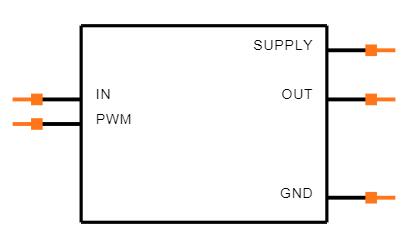
Footprint
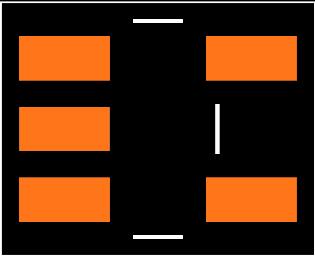
3D Models
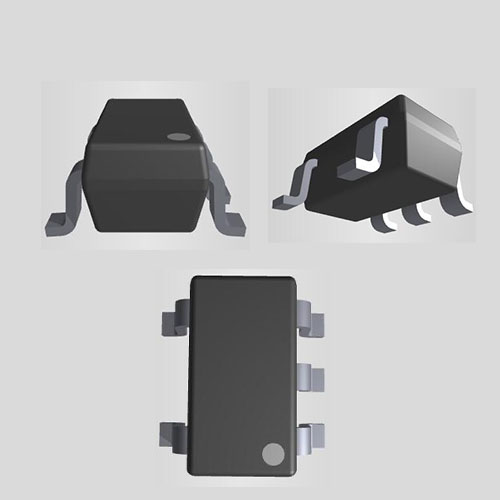
TPS92612QDBVRQ1 Applications
•Automotive Convenience Lighting: Dome Light, Door Handles, Reading Lamp, and Miscellaneous Lamps
•Automotive Rear Lamp, Center High-Mounted Stop Lamp, Side Markers, Blind-Spot Detection Indicator, Charging Indicator
•General-Purpose LED -Driver Applications
TPS92612QDBVRQ1 Package
TPS92612QDBVRQ1 Pin Configuration and Functions

| PIN | |||
| Name | NO. | I/O | DESCRIPTION |
| GND | 1 | - | Groud |
| IN | 4 | I | Current input |
| OUT | 5 | O | Constant-current output |
| PWM | 2 | I | PWM input |
| SUPPLY | 3 | I | Devicesupplyvoltage |
Specifications
- TypeParameter
- Lifecycle Status
Lifecycle Status refers to the current stage of an electronic component in its product life cycle, indicating whether it is active, obsolete, or transitioning between these states. An active status means the component is in production and available for purchase. An obsolete status indicates that the component is no longer being manufactured or supported, and manufacturers typically provide a limited time frame for support. Understanding the lifecycle status is crucial for design engineers to ensure continuity and reliability in their projects.
ACTIVE (Last Updated: 1 day ago) - Factory Lead Time6 Weeks
- Mounting Type
The "Mounting Type" in electronic components refers to the method used to attach or connect a component to a circuit board or other substrate, such as through-hole, surface-mount, or panel mount.
Surface Mount - Package / Case
refers to the protective housing that encases an electronic component, providing mechanical support, electrical connections, and thermal management.
SC-74A, SOT-753 - Surface Mount
having leads that are designed to be soldered on the side of a circuit board that the body of the component is mounted on.
YES - Number of Pins5
- Operating Temperature
The operating temperature is the range of ambient temperature within which a power supply, or any other electrical equipment, operate in. This ranges from a minimum operating temperature, to a peak or maximum operating temperature, outside which, the power supply may fail.
-40°C~125°C TA - Packaging
Semiconductor package is a carrier / shell used to contain and cover one or more semiconductor components or integrated circuits. The material of the shell can be metal, plastic, glass or ceramic.
Tape & Reel (TR) - Series
In electronic components, the "Series" refers to a group of products that share similar characteristics, designs, or functionalities, often produced by the same manufacturer. These components within a series typically have common specifications but may vary in terms of voltage, power, or packaging to meet different application needs. The series name helps identify and differentiate between various product lines within a manufacturer's catalog.
Automotive, AEC-Q100 - JESD-609 Code
The "JESD-609 Code" in electronic components refers to a standardized marking code that indicates the lead-free solder composition and finish of electronic components for compliance with environmental regulations.
e4 - Pbfree Code
The "Pbfree Code" parameter in electronic components refers to the code or marking used to indicate that the component is lead-free. Lead (Pb) is a toxic substance that has been widely used in electronic components for many years, but due to environmental concerns, there has been a shift towards lead-free alternatives. The Pbfree Code helps manufacturers and users easily identify components that do not contain lead, ensuring compliance with regulations and promoting environmentally friendly practices. It is important to pay attention to the Pbfree Code when selecting electronic components to ensure they meet the necessary requirements for lead-free applications.
yes - Part Status
Parts can have many statuses as they progress through the configuration, analysis, review, and approval stages.
Active - Moisture Sensitivity Level (MSL)
Moisture Sensitivity Level (MSL) is a standardized rating that indicates the susceptibility of electronic components, particularly semiconductors, to moisture-induced damage during storage and the soldering process, defining the allowable exposure time to ambient conditions before they require special handling or baking to prevent failures
2 (1 Year) - Number of Terminations5
- ECCN Code
An ECCN (Export Control Classification Number) is an alphanumeric code used by the U.S. Bureau of Industry and Security to identify and categorize electronic components and other dual-use items that may require an export license based on their technical characteristics and potential for military use.
EAR99 - TypeLinear
- Terminal Finish
Terminal Finish refers to the surface treatment applied to the terminals or leads of electronic components to enhance their performance and longevity. It can improve solderability, corrosion resistance, and overall reliability of the connection in electronic assemblies. Common finishes include nickel, gold, and tin, each possessing distinct properties suitable for various applications. The choice of terminal finish can significantly impact the durability and effectiveness of electronic devices.
Nickel/Palladium/Gold (Ni/Pd/Au) - Applications
The parameter "Applications" in electronic components refers to the specific uses or functions for which a component is designed. It encompasses various fields such as consumer electronics, industrial automation, telecommunications, automotive, and medical devices. Understanding the applications helps in selecting the right components for a particular design based on performance, reliability, and compatibility requirements. This parameter also guides manufacturers in targeting their products to relevant markets and customer needs.
Automotive, Lighting - Terminal Position
In electronic components, the term "Terminal Position" refers to the physical location of the connection points on the component where external electrical connections can be made. These connection points, known as terminals, are typically used to attach wires, leads, or other components to the main body of the electronic component. The terminal position is important for ensuring proper connectivity and functionality of the component within a circuit. It is often specified in technical datasheets or component specifications to help designers and engineers understand how to properly integrate the component into their circuit designs.
DUAL - Terminal Form
Occurring at or forming the end of a series, succession, or the like; closing; concluding.
GULL WING - Peak Reflow Temperature (Cel)
Peak Reflow Temperature (Cel) is a parameter that specifies the maximum temperature at which an electronic component can be exposed during the reflow soldering process. Reflow soldering is a common method used to attach electronic components to a circuit board. The Peak Reflow Temperature is crucial because it ensures that the component is not damaged or degraded during the soldering process. Exceeding the specified Peak Reflow Temperature can lead to issues such as component failure, reduced performance, or even permanent damage to the component. It is important for manufacturers and assemblers to adhere to the recommended Peak Reflow Temperature to ensure the reliability and functionality of the electronic components.
260 - Number of Functions1
- Base Part Number
The "Base Part Number" (BPN) in electronic components serves a similar purpose to the "Base Product Number." It refers to the primary identifier for a component that captures the essential characteristics shared by a group of similar components. The BPN provides a fundamental way to reference a family or series of components without specifying all the variations and specific details.
TPS92612 - Number of Outputs1
- Voltage - Output
Voltage - Output is a parameter that refers to the electrical potential difference between the output terminal or pin of an electronic component and a reference point, typically ground. It indicates the level of voltage that the component is capable of providing at its output under specified operating conditions. This parameter is crucial in determining the performance and functionality of the component in a circuit, as it directly affects the signal or power being delivered to other components or devices connected to the output. Engineers and designers use the voltage output specification to ensure compatibility and proper functioning of the component within the overall system.
0V~40V - Internal Switch(s)
The term "Internal Switch(s)" in electronic components typically refers to a built-in mechanism within a device that allows for the control of electrical current flow. These internal switches can be used to turn circuits on or off, change the direction of current, or regulate the flow of electricity within the component. They are often designed to be controlled externally, either manually or automatically, to enable various functions or operations within the electronic device. Internal switches play a crucial role in the overall functionality and performance of electronic components by providing a means to manage and manipulate electrical signals effectively.
No - Dimming
Dimming is a feature in electronic components, such as LED lights or display screens, that allows the user to adjust the brightness level of the device. It is a method of controlling the amount of light output by the component, typically by varying the voltage or current supplied to it. Dimming can be achieved through various techniques, such as pulse-width modulation (PWM) or analog dimming. This feature is commonly used to save energy, create ambiance, or enhance visual comfort in different applications.
PWM - Number of Segments3
- Voltage - Supply (Max)
Voltage - Supply (Max) is a parameter in electronic components that specifies the maximum voltage that can be safely applied to the component for proper operation. This parameter is crucial for ensuring the component's longevity and preventing damage due to overvoltage conditions. Exceeding the maximum supply voltage can lead to component failure, reduced performance, or even permanent damage. Designers must carefully consider this parameter when selecting components and designing circuits to ensure reliable and safe operation within the specified voltage limits.
40V - Voltage - Supply (Min)
Voltage - Supply (Min) is a parameter in electronic components that specifies the minimum voltage required for the component to operate within its specified performance range. This parameter indicates the lowest voltage level that can be safely applied to the component without causing malfunctions or damage. It is crucial to ensure that the supply voltage provided to the component is equal to or higher than the specified minimum voltage to guarantee proper functionality and reliability. Failure to meet this requirement may result in erratic behavior, reduced performance, or even permanent damage to the component.
4.5V - Multiplexed Display Capability
Multiplexed Display Capability refers to the ability of an electronic component or system to control multiple display elements using fewer input/output lines. This is achieved by rapidly switching between different displays or segments, allowing for efficient communication and reduced wiring complexity. In multiplexed systems, each display is activated sequentially, creating the illusion of simultaneous display to the user. This capability is commonly utilized in devices like LED matrices and LCD screens to enhance functionality while conserving space and resources.
NO - Height1.45mm
- Length2.9mm
- Width1.6mm
- Thickness
Thickness in electronic components refers to the measurement of how thick a particular material or layer is within the component structure. It can pertain to various aspects, such as the thickness of a substrate, a dielectric layer, or conductive traces. This parameter is crucial as it impacts the electrical, mechanical, and thermal properties of the component, influencing its performance and reliability in electronic circuits.
1.2mm - RoHS Status
RoHS means “Restriction of Certain Hazardous Substances” in the “Hazardous Substances Directive” in electrical and electronic equipment.
ROHS3 Compliant
Trend Analysis
Parts with Similar Specs
What’s the main parameters of TPS92612QDBVRQ1 ?
The main parameters of this part are: Automotive single-channel LED driver with 150mA output, short protection 5-SOT-23 -40 to 125.
Will TPS92612QDBVRQ1 be broken, if the temperature is over 125℃?
No, it has over-temperature protection. The TPS92612QDBVRQ1 device monitors device junction temperature. When the junction temperature reaches thermal shut down threshold T(TSD), the output shuts down. Once the junction temperature falls below T(TSD)– T(TSD_HYS), the device resumes normal operation.
What’s TPS92612QDBVRQ1?
The TPS92612QDBVRQ1 device is one of a family of single-channel linear LED drivers. The device provides a simple current source with protection for automotive LED applications.
What’s the recommended operating conditions of TPS92612QDBVRQ1?
The device supply voltage is between 4.5 and 40v. The sense voltage is between 4.4 and 40v. PWM inputs are from 0 to 40 v. Driver output is also from 0 to 40v. The operating ambient temperature is between -40 and 125°C.
What’s the dimensions of TPS92612QDBVRQ1 ?
Height:1.45mm/Length:2.9mm/Thickness:1.2mm/Width:1.6mm
 BC557B Transistors: Pinout, Features and Datasheet
BC557B Transistors: Pinout, Features and Datasheet28 September 20213484
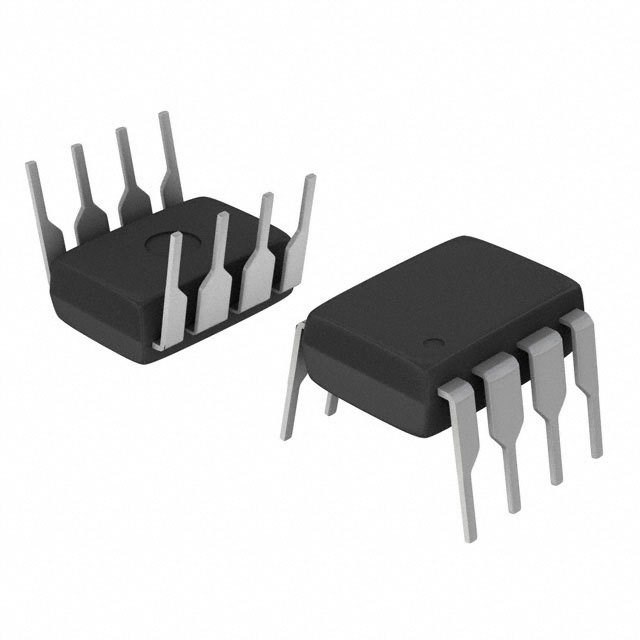 LM2904N Operational Amplifier: Datasheet, Pinout, and Circuit
LM2904N Operational Amplifier: Datasheet, Pinout, and Circuit26 August 20214547
 BAT54J Diode: SOD323F, 30V, Datasheet, Pinout, Application
BAT54J Diode: SOD323F, 30V, Datasheet, Pinout, Application18 February 20221094
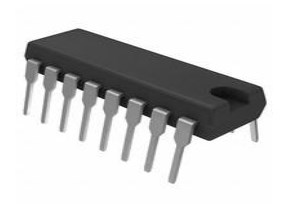 ULQ2003 Darlington Array: Pinout, Features and Datasheet
ULQ2003 Darlington Array: Pinout, Features and Datasheet29 November 20213022
 ATMEGA2560 Microcontroller: Pinout, Datasheet and Schematic
ATMEGA2560 Microcontroller: Pinout, Datasheet and Schematic13 July 202111077
 STM32F051C6T7 Microcontroller: Datasheet, Pinout, Block Diagram
STM32F051C6T7 Microcontroller: Datasheet, Pinout, Block Diagram13 September 20211936
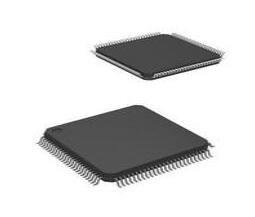 FT900 Embedded Microcontroller: Datasheet, Application, Pinout
FT900 Embedded Microcontroller: Datasheet, Application, Pinout03 August 20211782
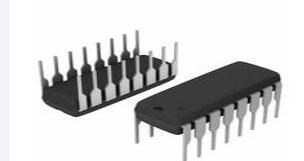 CD4060 Binary Counter: Datasheet, Pinout, Circuit
CD4060 Binary Counter: Datasheet, Pinout, Circuit01 November 20217856
 Analysis and Solutions of Common Causes of Serial Port Lost Data
Analysis and Solutions of Common Causes of Serial Port Lost Data15 August 20224025
 Detailed Introduction of the Chip Design Process
Detailed Introduction of the Chip Design Process21 December 202116536
 How Do We Seize Investment Opportunities on the Eve of the Ultimate Human Energy Final?
How Do We Seize Investment Opportunities on the Eve of the Ultimate Human Energy Final?12 July 2022886
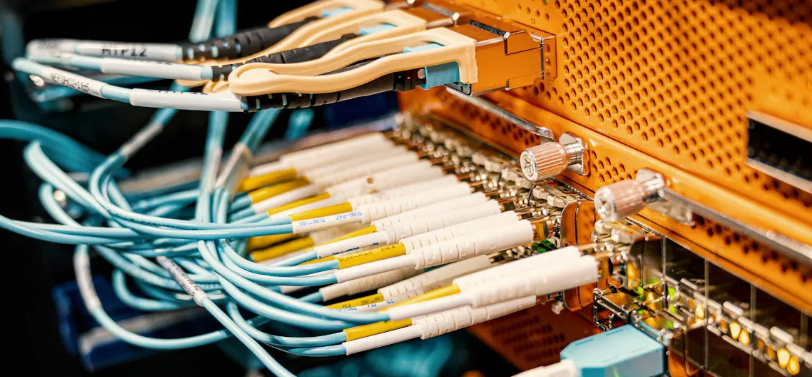 How Top Wire Splice Connector Brands Stack Up This Year
How Top Wire Splice Connector Brands Stack Up This Year10 July 2025845
 Exploring the Strengths and Hurdles of Wide Bandgap Devices in Alternating Current Electric Drives
Exploring the Strengths and Hurdles of Wide Bandgap Devices in Alternating Current Electric Drives19 January 20241984
 NOR Flash: Working, Structure and Applications
NOR Flash: Working, Structure and Applications18 November 202112013
![A Guide to AVR Microcontroller [PDF]](https://res.utmel.com/Images/Article/0c3aa30d-e2d7-48f0-99c3-1b176aa33832.jpg) A Guide to AVR Microcontroller [PDF]
A Guide to AVR Microcontroller [PDF]15 October 20257271
 Is Electromagnetic Radiation from Base Stations Terrible?
Is Electromagnetic Radiation from Base Stations Terrible?06 December 20213002
Texas Instruments
In Stock: 21493
United States
China
Canada
Japan
Russia
Germany
United Kingdom
Singapore
Italy
Hong Kong(China)
Taiwan(China)
France
Korea
Mexico
Netherlands
Malaysia
Austria
Spain
Switzerland
Poland
Thailand
Vietnam
India
United Arab Emirates
Afghanistan
Åland Islands
Albania
Algeria
American Samoa
Andorra
Angola
Anguilla
Antigua & Barbuda
Argentina
Armenia
Aruba
Australia
Azerbaijan
Bahamas
Bahrain
Bangladesh
Barbados
Belarus
Belgium
Belize
Benin
Bermuda
Bhutan
Bolivia
Bonaire, Sint Eustatius and Saba
Bosnia & Herzegovina
Botswana
Brazil
British Indian Ocean Territory
British Virgin Islands
Brunei
Bulgaria
Burkina Faso
Burundi
Cabo Verde
Cambodia
Cameroon
Cayman Islands
Central African Republic
Chad
Chile
Christmas Island
Cocos (Keeling) Islands
Colombia
Comoros
Congo
Congo (DRC)
Cook Islands
Costa Rica
Côte d’Ivoire
Croatia
Cuba
Curaçao
Cyprus
Czechia
Denmark
Djibouti
Dominica
Dominican Republic
Ecuador
Egypt
El Salvador
Equatorial Guinea
Eritrea
Estonia
Eswatini
Ethiopia
Falkland Islands
Faroe Islands
Fiji
Finland
French Guiana
French Polynesia
Gabon
Gambia
Georgia
Ghana
Gibraltar
Greece
Greenland
Grenada
Guadeloupe
Guam
Guatemala
Guernsey
Guinea
Guinea-Bissau
Guyana
Haiti
Honduras
Hungary
Iceland
Indonesia
Iran
Iraq
Ireland
Isle of Man
Israel
Jamaica
Jersey
Jordan
Kazakhstan
Kenya
Kiribati
Kosovo
Kuwait
Kyrgyzstan
Laos
Latvia
Lebanon
Lesotho
Liberia
Libya
Liechtenstein
Lithuania
Luxembourg
Macao(China)
Madagascar
Malawi
Maldives
Mali
Malta
Marshall Islands
Martinique
Mauritania
Mauritius
Mayotte
Micronesia
Moldova
Monaco
Mongolia
Montenegro
Montserrat
Morocco
Mozambique
Myanmar
Namibia
Nauru
Nepal
New Caledonia
New Zealand
Nicaragua
Niger
Nigeria
Niue
Norfolk Island
North Korea
North Macedonia
Northern Mariana Islands
Norway
Oman
Pakistan
Palau
Palestinian Authority
Panama
Papua New Guinea
Paraguay
Peru
Philippines
Pitcairn Islands
Portugal
Puerto Rico
Qatar
Réunion
Romania
Rwanda
Samoa
San Marino
São Tomé & Príncipe
Saudi Arabia
Senegal
Serbia
Seychelles
Sierra Leone
Sint Maarten
Slovakia
Slovenia
Solomon Islands
Somalia
South Africa
South Sudan
Sri Lanka
St Helena, Ascension, Tristan da Cunha
St. Barthélemy
St. Kitts & Nevis
St. Lucia
St. Martin
St. Pierre & Miquelon
St. Vincent & Grenadines
Sudan
Suriname
Svalbard & Jan Mayen
Sweden
Syria
Tajikistan
Tanzania
Timor-Leste
Togo
Tokelau
Tonga
Trinidad & Tobago
Tunisia
Turkey
Turkmenistan
Turks & Caicos Islands
Tuvalu
U.S. Outlying Islands
U.S. Virgin Islands
Uganda
Ukraine
Uruguay
Uzbekistan
Vanuatu
Vatican City
Venezuela
Wallis & Futuna
Yemen
Zambia
Zimbabwe




















